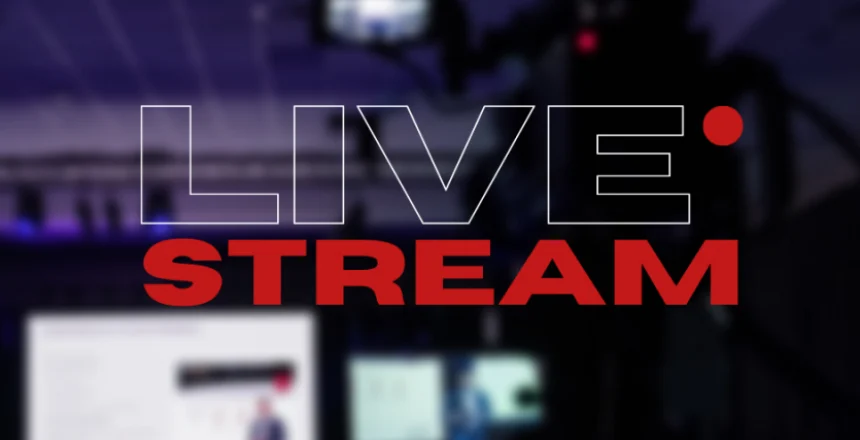Live Stream your conference! Ever wondered how to scale your event without having the extra expenses? Ever thought about how you can maximise the impact of your event? Ever considered taking your event online? Live streaming a conference is a simple, yet effective way, of ticking all those boxes.
Why live stream a conference?
- Get more attendees
- Higher engagement
- You can re-use the content
How to live stream your conference
As mentioned before, live streaming is a simple and effective way of growing your event – although it’s easy it is possible to do it wrong. You can make your conference appear as if it is professionally live-streamed, even if you’re not a professional producer. However, to achieve those results, and reach the biggest audience, you need to ensure that you have the right tools, team and services before you go LIVE.
Step 1 – Choose your streaming platform
Here is an effective way to think about various types of streaming platforms:
– Universal Platforms
– Business Platforms
To reach a business audience, or if you want to push branded, live-streamed events specific to an industry LinkedIn and Instagram are great options for this.
– Gaming Platforms
The gaming industry is growing fast, and so is the audience. The most effective platform for streaming gaming is Twitch and Mixer.
– Closed Viewing
In order to broadcast to your members, or to paying attendees, Vimeo is a very reliable platform to use. With its easy to use live engagement tools, including LIVE Q&A, LIVE polls, Audience chat, email capture and custom calls-to-action it’s the perfect place for online networking among your attendees, and online viewing.
Alternatively, you can live stream to your own website. Whilst this is great for your existing audience that may be familiar with your organisation and your website, it isn’t great for attracting a new audience. You should be prepared to work towards engaging a new audience, which is usually on social media.
Step 2 – Get the right equipment & team
Whether you’re renting equipment or using what you have, your options won’t vary too much. Streaming an event usually requires multiple cameras and audio sources. As a result, you’ll need capture cards that can handle multiple cameras and sources to make this happen.
Here’s what a setup usually looks like for LIVE streaming:
- Video and Audio sources: These are the cameras and microphones you will need to capture your content. It’s worth noting that you will need a couple of each in order to get full coverage of your conference or event.
- Capture Cards: These are the devices that capture the video and audio signal coming from these separate sources.
- An encoder: This can either be a dedicated hardware device that might also double up as a capture card, or a software solution you install on a personal computer.
- Multi-streaming Platform: This is a platform that will enable you to stream to several platforms at the same time from one place.
- Channel for output: This is a platform where you’ll be streaming to. You’ll need a stable internet connection with a good upload speed too. If the venue does not have one, you’ll have to find an alternative way to create your own hotspot.
- Broadcast Team: To ensure that you have a professional, smooth stream, you’ll need a camera, audio and stream operators to control each of these.
There are some nuances to this setup, however. If you are choosing a hardware encoder, for example, you will have to get a separate switcher to switch between video inputs. With a free software encoder, you will probably be able to handle at least two cameras and the switching between them. For more cameras in your setup, you will have to look for a professional-grade software encoder. These you can hire from Fresh Productions!
Step 3 – Do a test run
It is vitally important that you carry out a test run of your live stream in advance of going live. Ensure that you give yourself and your team plenty of time to carry this out and address any issues that may arise. This must be done well in advance to release any pressure or stress if there are any problems.
To carry out the test, you should conduct a test stream to your chosen platform after setting it to a private setting. Look out for any issues with buffering, sound quality, audio-video syncing issues and any other issues that are common when streaming. Address and fix the issue until you are sure it’s taken care of rather than hoping it will fix itself and ‘be alright when it’s live.’ Once this test has been conducted, you’re ready to go live!
In conclusion, live streaming is a simple yet effective way of enhancing your event and taking it to the next level. Go bigger and better with your events with live streaming!
For more information, equipment or ways to bring live streaming to your event, get in touch today – our team will be happy to help!


